MotoCAN Installation for BMW R1300 GS
How to install the MotoCAN for BMW Bikes
Installation guide:
This is a step by step guide to installing the MotoCAN for BMW motorcycles.
The following bikes are supported by the MotoCAN for BMW Bikes:
- BMW R 1300 GS (2024+) – KA1

STEP 1:
Install the MotoCAN
LOCATE YOUR BIKE'S BATTERY & THE ALARM (XDWA) CONNECTOR
Required tools:
- 10mm Wrench or socket
- Torx T40 (Optional)
To fit MotoCAN you will need to remove the rider and pillion seats. If your bike has heated seats, you will need to unplug the seat heating connections under both the rider and pillion seats.
The MotoCAN will need to be connected to the motorcycle battery and to the (XDWA) connector.
The only tools required would be a 10mm wrench or socket needed to remove the battery bolts.
The motorcycle battery is located underneath the rider’s seat, in the area close to the motorcycle fuel tank.
Location of motorcycle battery:
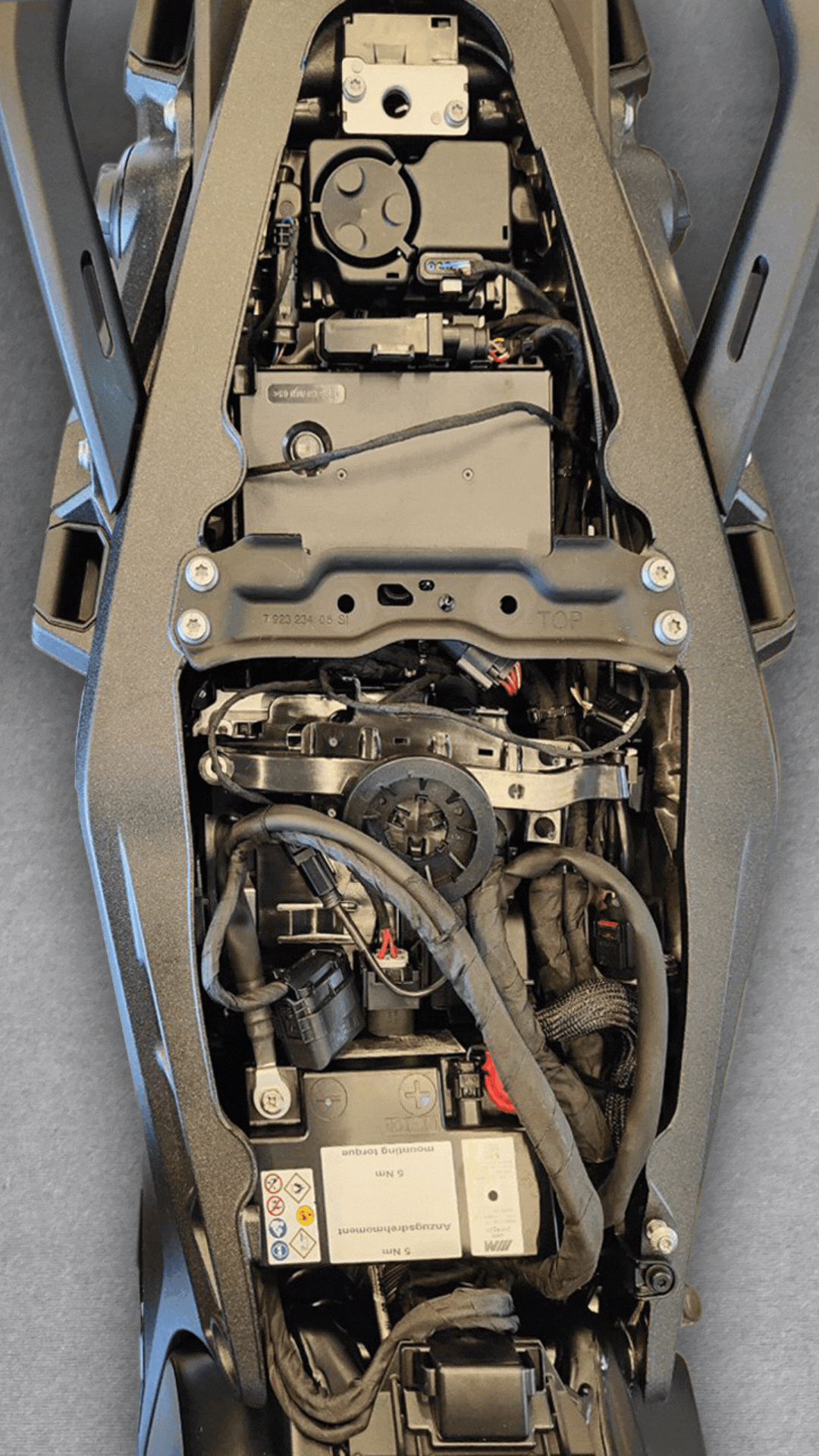
Optional: You may also want to remove the cross brace to ease cable routing. This is held in place by the 4x Torx T40 bolts.
Location of cross brace:
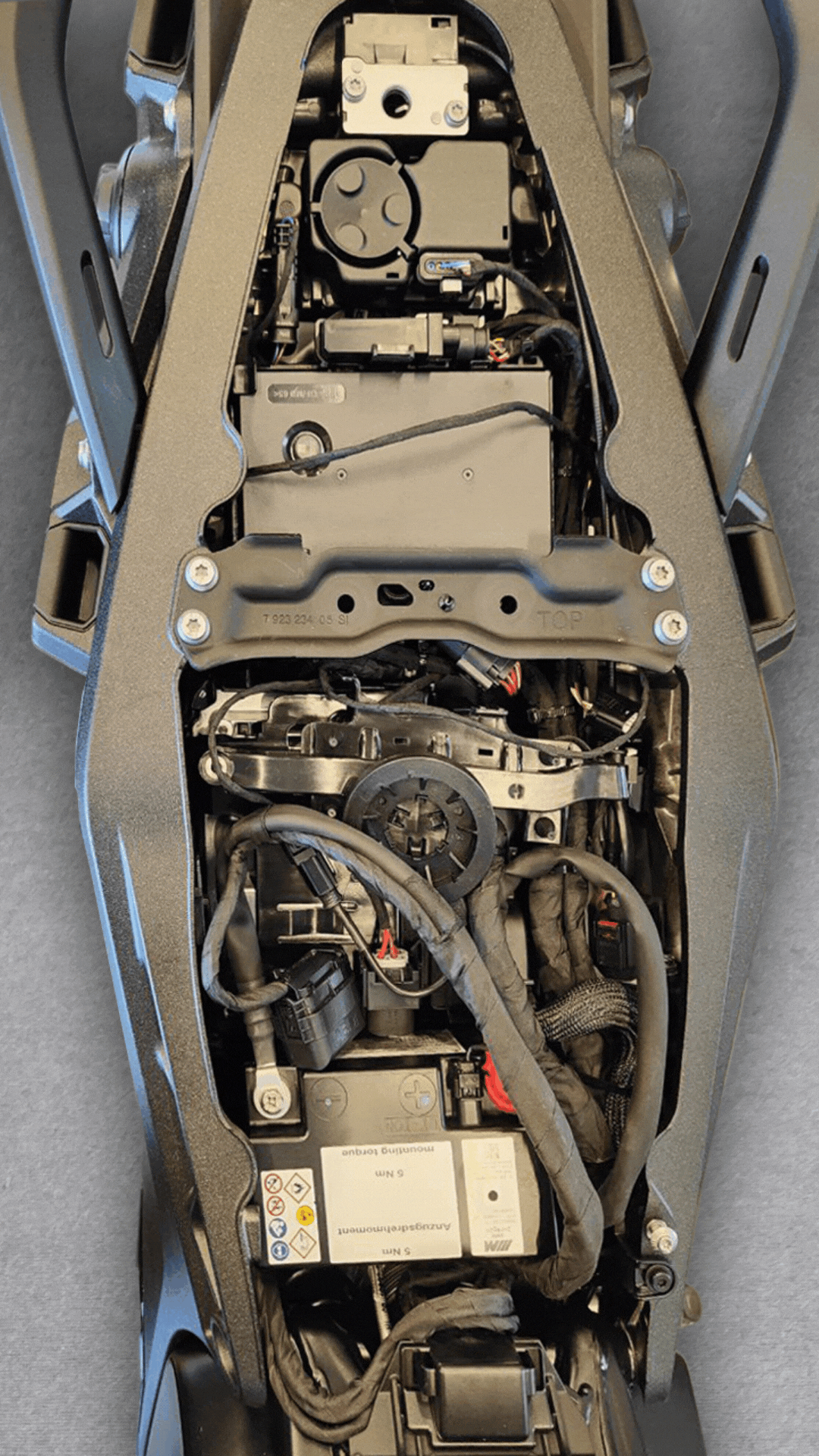
THERE ARE TWO LOCATIONS FOR THE XDWA CONNECTOR
If your motorcycle has the optional Alarm fitted: the XDWA connection is located at the Alarm underneath the pillion seat – as shown.
With optional alarm fitted
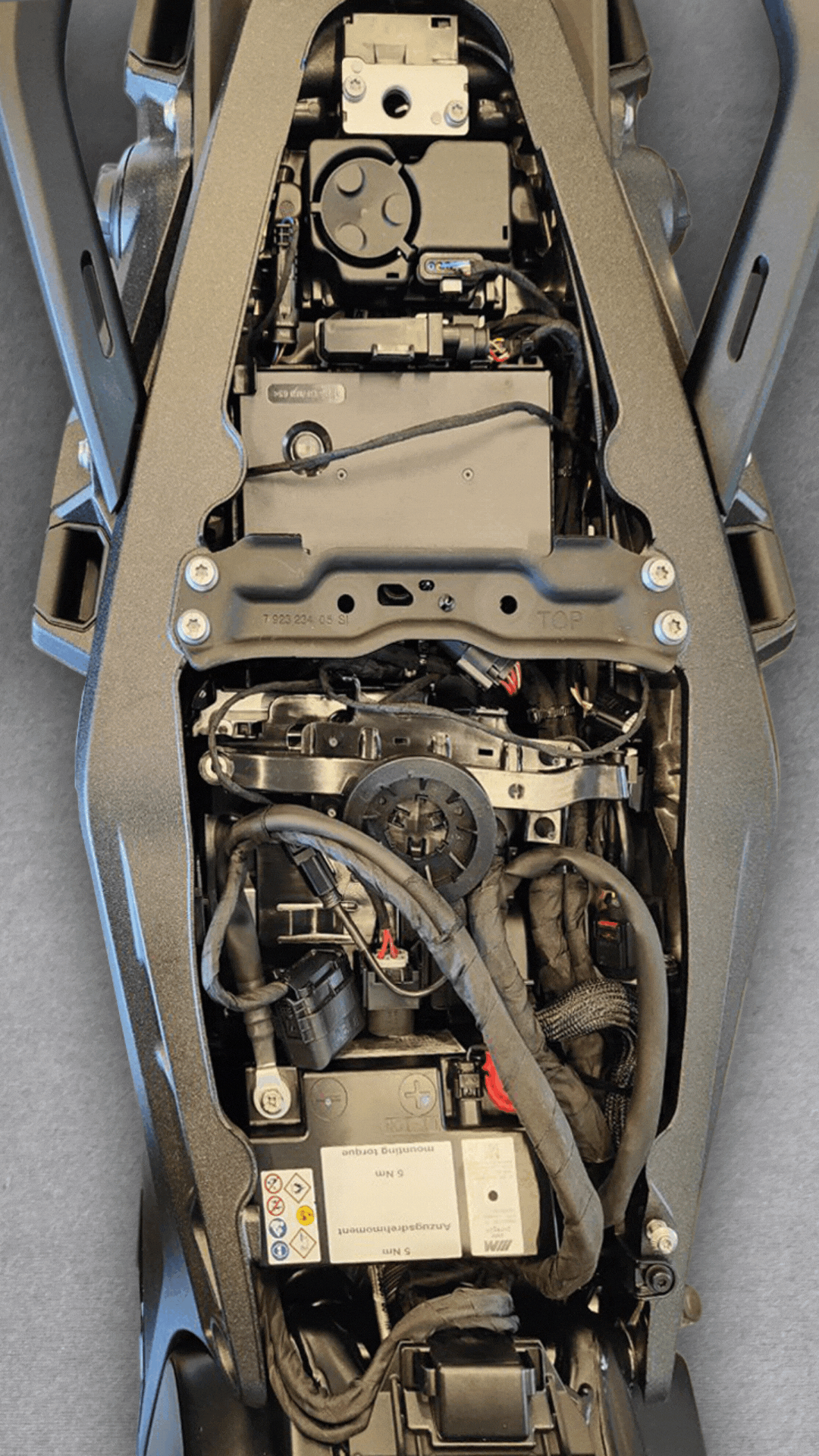
If your motorcycle does not have the optional Alarm fitted: the XDWA connection is located underneath the pillion seat – as shown.
Without optional alarm fitted
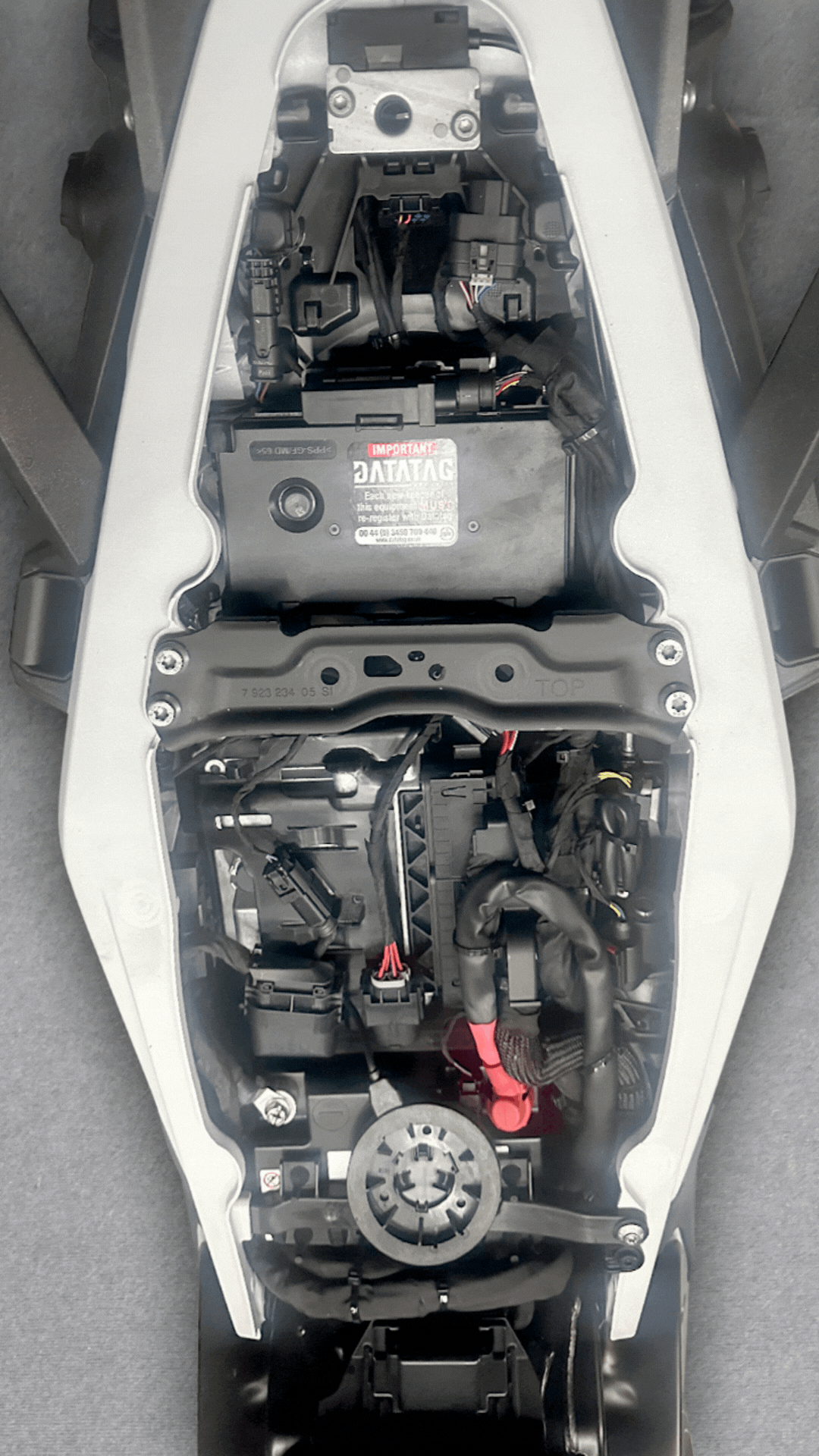
STEP 2:
PLUG THE MotoCAN INTO THE CAN-BUS
To remove the OE XDWA connector, pull the white tab away from the connector and then depress the tab to release the locking mechanism.
Releasing the XDWA connector from the BMW R 1300 GS – as viewed from the left side of the motorcycle
Releasing the XDWA connector from the BMW R 1300 GS – as viewed from the right side of the motorcycle
If your bike has an alarm, connect the MotoCAN wiring harness between the alarm controller and the bike’s wiring harness.
If your bike does not have an alarm, connect the MotoCAN's harness to the bike’s harness and click the other end into the retaining plug that protected the bike’s OE plug.
STEP 4:
ROUTE AND CONNECT THE BATTERY WIRES
Connecting the MotoCAN to the battery is straightforward.
Disconnect the battery cables. ALWAYS disconnect the Negative first and reconnect it last. In doing so you will prevent possible short circuits if a tool connected to the positive terminal touches the metal frame of the motorcycle.
Connect the MotoCAN battery harness, reconnect the battery terminals in the reverse order (positive terminal first, followed by the negative terminal).
The MotoCAN LED should be a solid green for around a minute, before the MotoCAN goes to sleep and the green LED goes off.
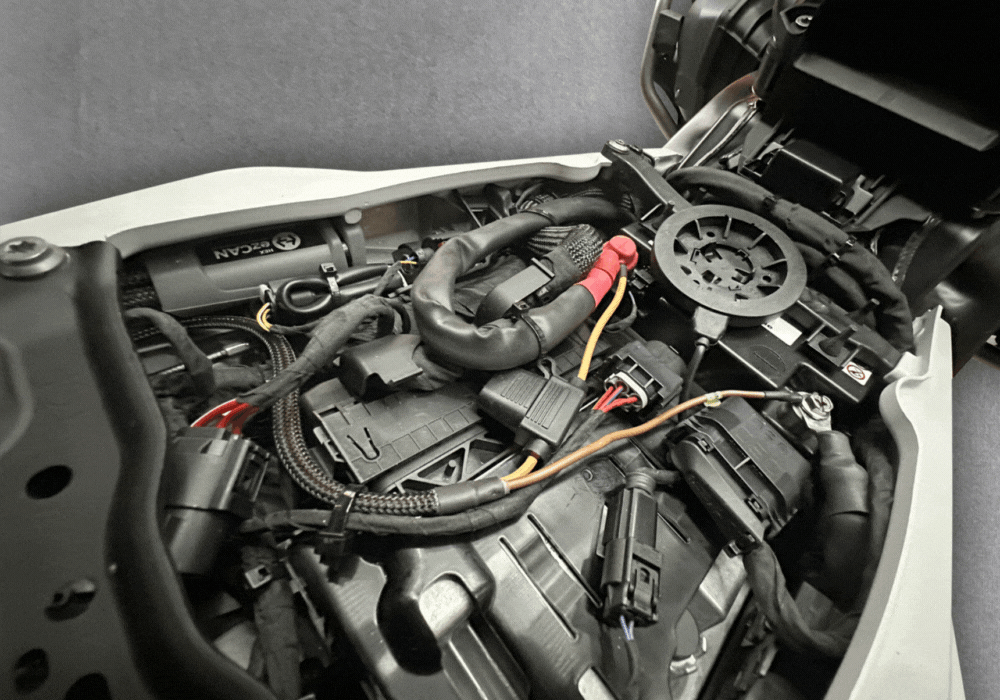
Routing the cables and finding a suitable place for your MotoCAN depends on a number of factors and your preference. Ensure that the wires are routed securely so they don’t chafe or pinch over time. Attach with cable ties where required.
Suggested locations for your MotoCAN are shown in the images above (tucked into a side panel) or below for easier access.
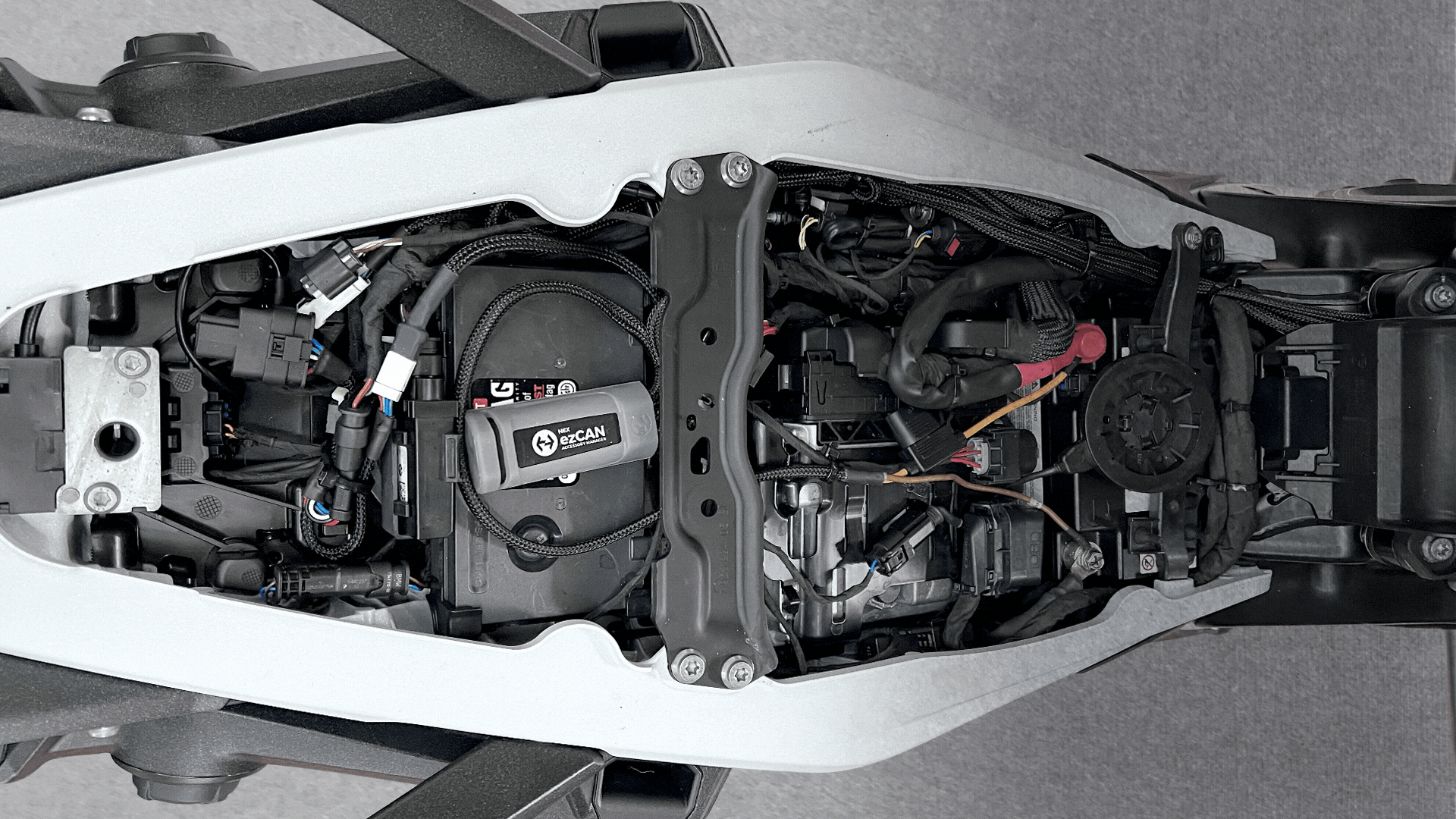
STEP 5:
CONNECT Motorcycle Lights to the White Channel

ADD OTHER ACCESSORIES USING COLOUR CODING
The MotoCAN kit includes four two stub connectors (Orange) with male connection terminals. The stub connectors are made up of the following types:- 3x MT 3-Pin Blanking Plugs (to attach other accessories)
- 1x Micro USB Dust Cover
- 3x MT 3-Pin Male Connector Stub Set
- 3x MT 3-Pin Rubber Plugs
- 20x Zip Ties
If your auxiliary lights have three wires change the two-wire stub connector into a three-wire see the image below. If your auxiliary lights have two wires use the two-wire stub connectors for accessories that have power and ground wires only.
If you are not going to use one or more of the circuit functions it is recommended that you install a blanking plug over the unused output. The MotoCAN product contains three blanking plugs.
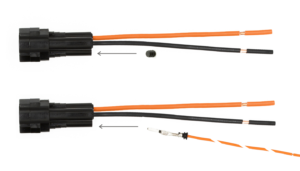 Insert blanking seal to use as a two-wire stub connector
Insert blanking seal to use as a two-wire stub connectorInsert terminal wire to use as a three-wire stub connector
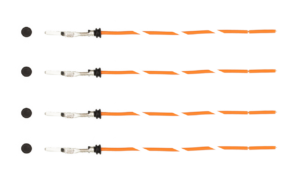 3 x Terminal wires and Blanking seals
3 x Terminal wires and Blanking seals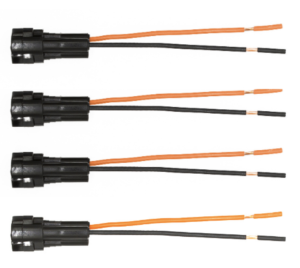 3 x Two Wire Stub Connectors
3 x Two Wire Stub ConnectorsConnect the terminals of the high-power stub connectors to the correct female terminals on the MotoCAN.
Connect the spotlight’s ground wire to the ground wire of the stub connector.
If you are installing spotlights equipped with a third wire for light-intensity control, connect the spotlight control wire to the control wire of the stub connector. If the spotlight only has two wires, use the two wire stub connectors.
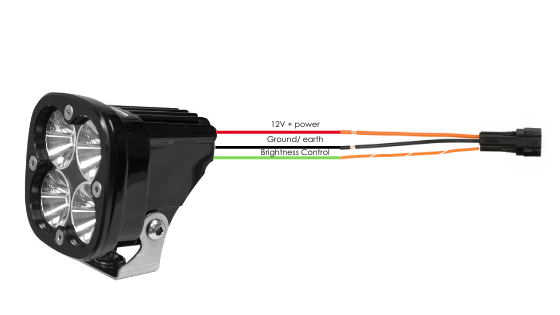
If you received four different coloured wires, please note the colour-coding on the output wires must match the colours in the output configuration you select from the MotoCAN circuit function software. Red to red, yellow to yellow, etc. Black wire is Battery Negative and the Red, Blue,Yellow and White are the Positive Supply.
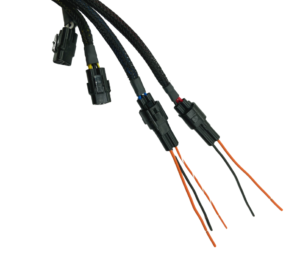
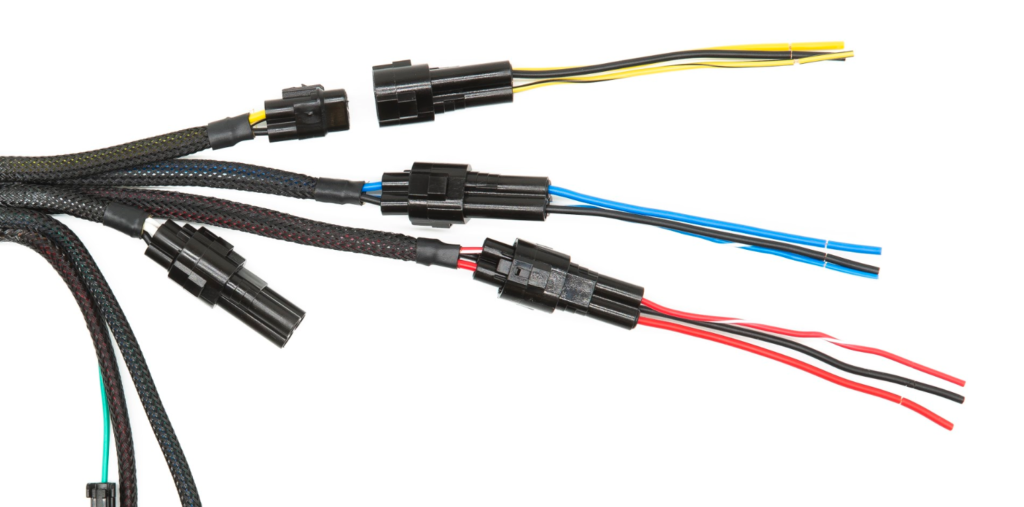
STEP 6:
DOWNLOAD, INSTALL & CONFIGURE THE SOFTWARE
CLICK HERE TO DOWNLOAD THE SOFTWARE
Please download the 'Quick Start Manual PDF' from the software page for the most up-to-date and comprehensive installation and configuration information.
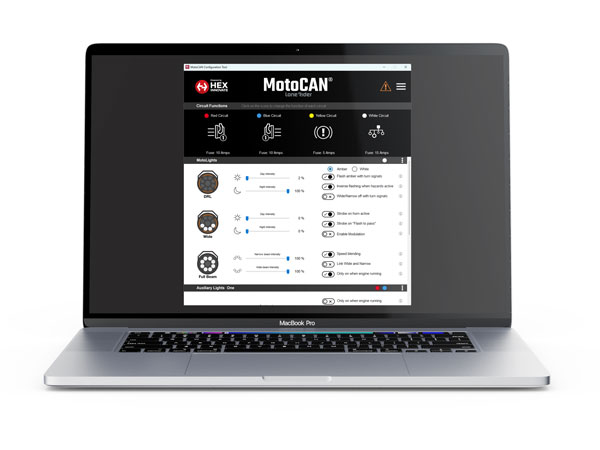
STEP 7:
TEST THE INSTALLATION
Most newly installed accessories can be tested simply with the ignition “ON”, but some brake functions will require the bike to be in motion and traveling above a certain speed. For example, emergency braking requires deceleration of more than 21km/h/s (kilometres per hour per second).
SAFETY NOTICE: Test and check your installations and accessories in a safe, controlled environment. Caution is advised at all times. Extra vigilance is required when testing new features or accessories. You do so at your own risk.
DISCLAIMER: MotoCAN is not liable for any injury or damage howsoever caused and all products and services are used at your own risk.
STEP 8:
COMPLETE THE INSTALLATION
Complete the installation by:
- Ensuring all cables and cable harnesses are secure and that the MotoCAN has a snug, secure place to rest (use the provided cable ties where required)
- Replacing the parts and screws
- Finally, give your installation a final inspection and a final test.
Well done! Now finish that beer whilst you read the important information in the User Manual on how to set the brightness of your lights using your bike’s handlebar controls. Did you know you can also toggle your accessory lights on and off using your handlebar controls?
Part no.: LR 0526

